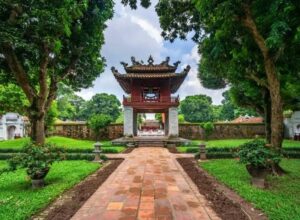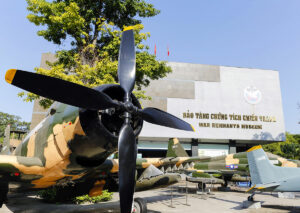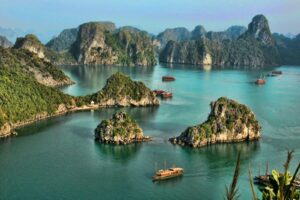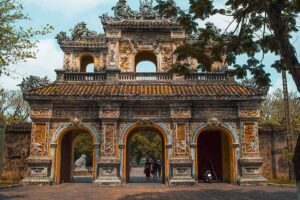Vietnam, a Southeast Asian gem, is a land of captivating landscapes, rich history, and vibrant culture. From the bustling streets of Hanoi to the serene waters of Ha Long Bay, Vietnam offers a diverse range of experiences for travelers.
1. Hanoi: The Historic Heartbeat

The Temple of Literature, Vietnam’s first national university
Hanoi, the capital city, is a blend of old-world charm and modern dynamism. Wandering through the Old Quarter, you’ll encounter narrow streets bustling with vendors, traditional markets, and historic French colonial architecture. Don’t miss a visit to the Ho Chi Minh Mausoleum, a revered site honoring the country’s revolutionary leader.
The Temple of Literature, Vietnam’s first national university, founded in 1070, is a serene oasis in the heart of Hanoi. Its ancient courtyards and beautiful gardens provide a glimpse into Vietnam’s scholarly past.
2. Ha Long Bay: A Natural Marvel
A UNESCO World Heritage site, Ha Long Bay is renowned for its emerald waters and thousands of limestone islands topped with rainforests. The bay’s mystical landscape is best explored by boat, where you can navigate through caves, visit floating villages, and enjoy water activities.
The Sung Sot Cave (Surprise Cave) is one of the largest and most beautiful caves in Ha Long Bay. Its impressive stalactites and stalagmites create a mesmerizing underground world.
3. Hoi An: The Ancient Town

Japanese Covered Bridge
Hoi An, a historic trading port, is famous for its well-preserved architecture and vibrant lantern-lit streets. The town’s unique blend of Chinese, Japanese, and European influences is evident in its ancient buildings, temples, and bridges.
The Japanese Covered Bridge, constructed in the 16th century, is an iconic symbol of Hoi An. This picturesque bridge, with its ornate design and historical significance, is a must-visit.
4. Hue: The Imperial City
Hue, the former imperial capital, is steeped in history and cultural heritage. The city’s main attraction is the Imperial City, a vast complex of palaces, temples, and gardens surrounded by thick stone walls.
The Thien Mu Pagoda, perched on the banks of the Perfume River, is one of Hue’s most famous landmarks. This seven-story pagoda offers stunning views and a serene atmosphere.
5. Ho Chi Minh City: The Bustling Metropolis

War Remnants Museum
Ho Chi Minh City, also known as Saigon, is Vietnam’s largest city and economic hub. It’s a city of contrasts, where sleek skyscrapers stand alongside historic buildings and bustling markets.
The War Remnants Museum provides a sobering look at the Vietnam War through a collection of photographs, artifacts, and military equipment. It’s an essential stop for understanding the country’s recent history.
6. Sapa: The Mountainous Retreat
Sapa, located in the northern highlands, is known for its stunning terraced rice fields and ethnic minority communities. The region offers excellent trekking opportunities, with trails leading through picturesque valleys and traditional villages.
Fansipan Mountain, the highest peak in Indochina, is accessible via a challenging trek or a cable car ride. The summit provides breathtaking views of the surrounding mountains and valleys.
Vietnam is a country of contrasts and surprises, where every destination offers a unique experience. Whether you’re exploring bustling cities, serene bays, historic towns, or mountainous retreats, Vietnam’s rich culture and natural beauty will leave a lasting impression. Plan your trip and discover the wonders of Vietnam, a traveler’s paradise waiting to be explored.



